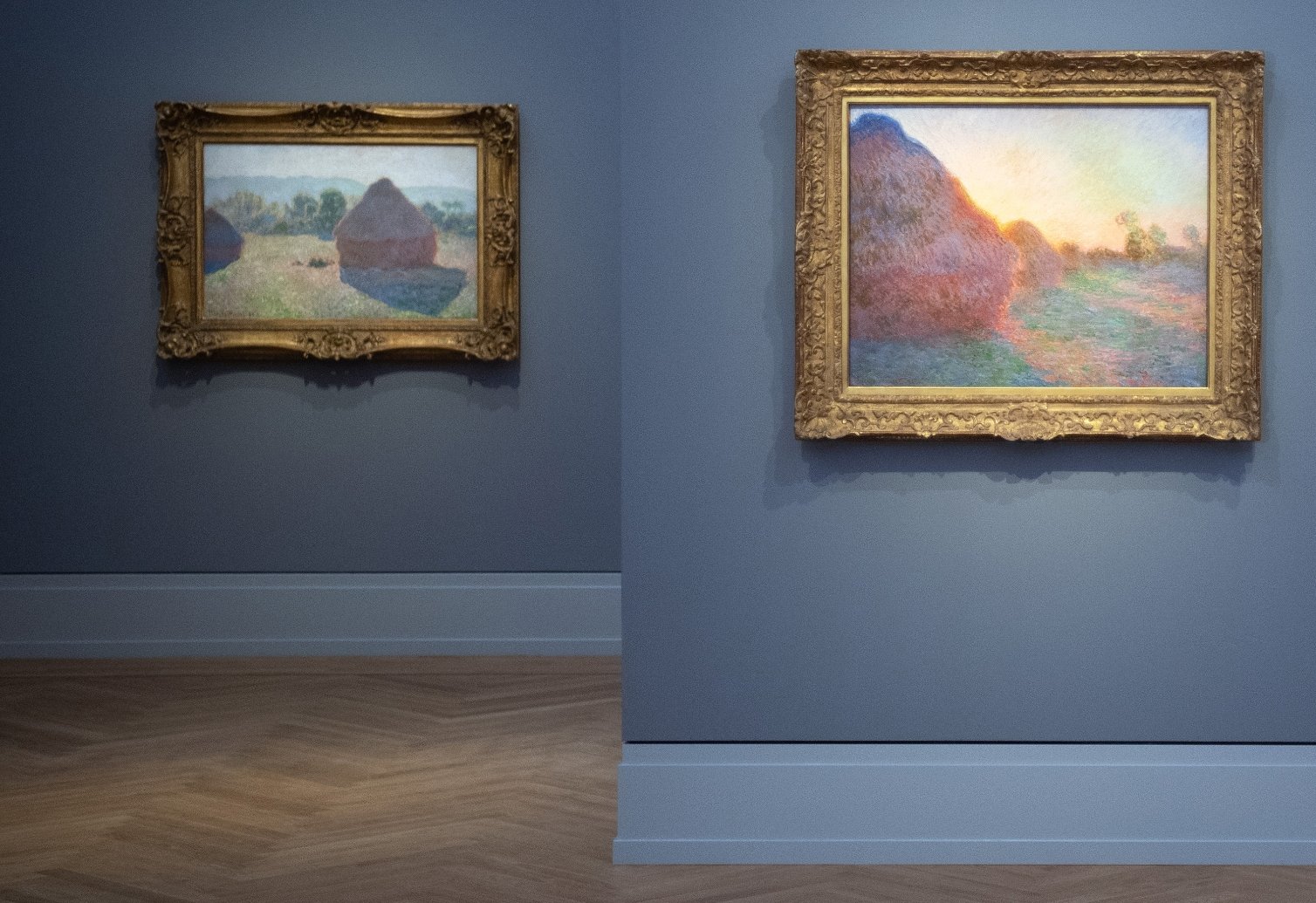© Turkuvaz Haberleşme ve Yayıncılık 2026
The security guard at Potsdam's Barberini art museum is visibly at a loss as to how to react. Striding to the Claude Monet painting where two people wearing high visibility orange vests are clearly up to something, he seems unsure about how to stop them, shouting a helpless "Hello? Hello?"
One of the activists, possibly briefly taken off guard by the hesitant approach, then replies with "Hello," before they splatter mashed potatoes across the painting from the French impressionist's "Haystacks" series.
In the more than five years since the museum opened its doors just outside Berlin, the Barberini has made a name for itself as a temple of art but had yet to make the national news. That has now changed thanks to the action by the Last Generation activists who, like other environmental groups, are currently attacking artworks all across Europe with different substances – often food – to draw attention to climate change issues and push for more decisive action.
Earlier in October, Dutch painter Johannes Vermeer's masterwork "Girl with a Pearl Earring" was targeted by climate change activists in a museum in the Netherlands. A video posted to Twitter shows two men near the painting. One of them glued his head to the glass in front of the artwork and a red liquid was poured over him. The other man had taped his hand to the wall next to the picture.
The most prominent protest to date may well be a group of climate activists splashing tomato soup earlier this month at Vincent Van Gogh's "Sunflowers" hanging in London's National Gallery, but similar incidents have also occurred in a series of other cities, including Manchester and Glasgow.
In Germany, many museums are now reconsidering security measures for their often valuable and sensitive exhibits, in fear of further protests. Many institutions have already ramped up protective measures, managing director of the German Museums Association, David Vuillaume, told Deutsche Presse-Agentur (dpa).

Simply hiring more security personnel isn't a solution in his eyes, as the employees are put under a lot of stress in these situations. "We need to prepare employees for this," Vuillaume says, adding that counseling should be part of the process.
Following the attack on the Monet painting, the Barberini museum will remain closed until Oct. 30, to consider how security measures can be improved, founder and multibillionaire Hasso Plattner told local media.
Some museums in Germany are planning to ramp up visitor checks at the entrance. "Larger bags are already banned in the museum," says Stefan Weppelmann who heads the Museum of Fine Arts in Leipzig.
At the Städel museum in Frankfurt, safety standards meet the "highest international standards," according to the institution where two climate activists each glued one hand to the frame of a large painting at the end of August.
Dresden State Art Collections in eastern Germany began ramping up security measures after artworks were attacked in Manchester and Glasgow in July. "The works are protected against attacks by various structural, technical, and also organizational measures," the museum told dpa.
Another museum in Hanover instructed facility managers, guards, and the restorer on how to handle such situations, according to spokesperson Judith Hartstang.
In Germany, attacks on artwork are a criminal offense and will be punished with criminal charges, she said.
"The works that were recently affected in London and Potsdam were behind glass – probably the best protection against paint, soup, or mashed potato attacks," according to Hartstang. The Sprengel Museum uses acoustic motion detectors, plexiglass bonnets for plinths as well as spacers in addition to glazing to protect its exhibits.
